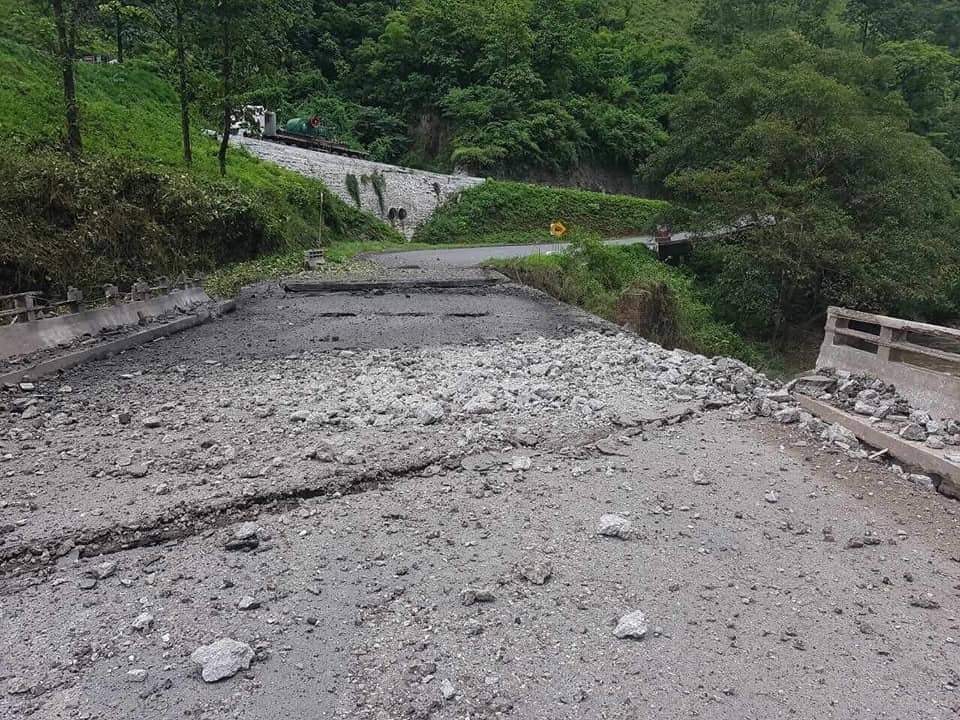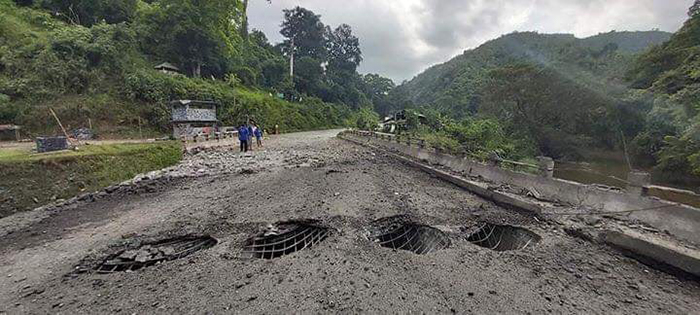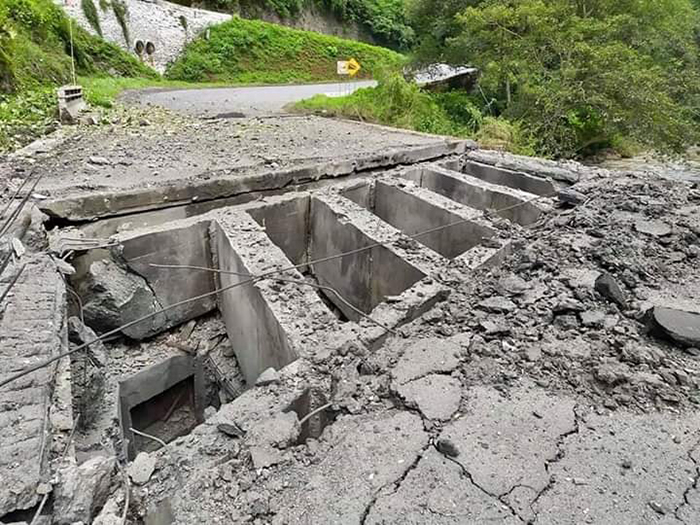In the pre-dawn early hours of August 15, three members out four belonging to the Northern Alliance – Burma (NA-B), the Arakan Army (AA), Myanmar National Democratic Army (MNDAA) also known as Kokang and Ta’ang National Liberation Army (TNLA) launched a coordinated chain of deadly attacks on Mandalay region Pyin Oo Lwin town, better known as Maymyo, and the adjacent Nawngkhio township in five locations.

The raids included the Military or Tatmadaw’s Defence Service Technological Academy (DSTA) in Pyin Oo Lwin, an exit toll gate to Nawngkhio in Pyin Oo Lwin township, a toll gate that leads to Kyaukme in Nawngkhio township, and at the Goke Twin Bridge and at a Goke Twin Police security outpost.
The attack on DSTA, which trains military personnel in cyber operations and signals intelligence,
is part of the Defence Service Academy (DSA) equivalent to the US Military Academy of West Point, was bombarded from the overlooking surrounding hills using 107mm surface-to-surface rockets, killing one civilian and wounding another soldier.
According to Tatmadaw’s news release, the attacks killed 9 Tatmadaw soldiers, including an officer, 3 policemen and 2 civilian, altogether 15 in total. Reportedly, one soldier is said to be wounded and four policemen missing.
However, the recent updated report made known by the Presidential Office spokesman Zaw Htay
gave the injured figure as 13, during his press briefing in Naypyitaw.
Cost of raids
The government blamed the NA-B for torpedoing the peace process, which the government’s National Reconciliation and Peace Centre (NRPC) is pushing for bilateral ceasefire agreement with all the four alliance members that Kachin Independence Army (KIA) is also a party, but somehow stayed out of the recent attacks on government’s security installations.
“These attacks have severely affected the peace negotiation process led by the state, but we still have the doors open for them to join in the peace talks,” Zaw Htay said.
Moreover, he said in terms of property and infrastructure damage, the cost totalled more than 280 million kyat, equivalent to US $177,141, due to the attacks.
The calculation includes the destruction of the Goke Twin Bridge, disruption of transportation, a damaged police outpost, toll gates and an anti-narcotics office in Nawngkhio, and as well the destruction of DSTA in Pyin Oo Lwin, Mandalay region.
Motive of NA-B revenge
Government and Tatmadaw are however on the same wavelength accusing the revenge motive of the three ethnic allied forces to the Tatmadaw’s drug bust which they allegedly owned. The NA-B, however, rejected the accusation.
Zaw Htay condemned the raids as apparent acts of terrorism because of their intentional attacks of civilian targets and destroying the checkpoint facilities for narcotic drugs.
Dr Min Zaw Oo, founder of the Myanmar Institute for Peace and Security (MIPS), a Yangon-based think tank, went further when he told Frontier Myanmar that the attack on the military academy was probably intended to divert attention from the main target.
The main target was the Nawnghkio checkpoint, he said, a drug enforcement gate near the Gokteik Viaduct that contained an X-ray machine from Israel.

“That X-ray machine has been intercepting a lot of drugs along the route,” he said, referring to the highway from Mandalay to Muse, the most important trading point on the Myanmar-China border. “That was the target, and that was destroyed,” he told Frontier Myanmar.
According to recent VOA report, Tatmadaw true news information group secretary Brigadier General Zaw Min Tun said the NA-B attacked because of the hard-hitting anti-narcotics undertakings of the authorities and increased Tatmadaw’s military success in subduing the AA in Arakan state.
He said: “The main thing in assessing the armed engagements in Arakan is that we have captured their hardcore traffickers and narcotics, the roots of their economic lifeline. In addition, we overran their training camps in Kyauktaw and Mrauk-U villages. And when they are losing ground, they made an announcement in the name of three groups (calling on the Tatmadaw to stop the offensives or face the consequences). The second point is before in Chin state, Paletwa area, the military clashes were rare but now we have reinforced, which makes them to lose ground and thus are compelled to attack the Tatmadaw.”
Reportedly Tatmadaw’s Defence Headquarters Office said , on August 8, two and a half million WY trademark methamphetamine tablets and war weapons from the house of village administrator in Yekontai village of Rathetaung township were captured.
“It is illogical for the Tatmadaw to claim that heavy weapons and narcotics belonging to us, when no villagers are home. No villagers will dare to store such things in the house,” retorted Khaing Thuka, who is responsible for AA information department.
He added: “ Militarily, the Tatmadaw knows better who is losing ground in the battle field. It could even be said that its causality figures of June, July and until August first week exceeded the last four five months.”
In the same vein, the TNLA spokesman Mai Aik Kyaw also rejected the accusation saying that his group anti-narcotics stance is well known.
According to the recent August 8 report of Tatmadaw, it is said to have captured illicit drugs worth of over 16 billion kyat, drug-manufacturing machines, and a drug factory in Chaungsone, southeast of Shou Haw village in Kutkai township on July 25, 2019 and also seized illicit drugs worth of over 5 billion kyat, weapons and other materials in Yetkontai village in Rathetaung township in Arakan state.
Reportedly, Tatmadaw is convinced that the attacks were caused by the seizure of 21 billion kyats worth of drugs in July and August in Shan and Arakan states, including heavy losses suffered in the battles by the AA.

NA-B explanation
Since March the TNLA has been threatening with a warning that if the Tatmadaw didn’t stop its offensives against the AA in Arakan state, it would be compelled to retaliate. The AA has been enduring the Tatmadaw’s onslaught since January 4, when it launched a coordinated attack on four police stations which were responded with massive offensives that are still ongoing.
On top of this, the Tatmadaw has been attacking the TNLA and MNDAA despite its unilateral ceasefire announcement that covers Shan and Kachin states since last December which is going to expire at the end of this month in August.
According to MIPS report for the month of July, AA armed clashes with the Tatmadaw was 41, with TNLA 13 clashes and MNDAA 7 clashes respectively with the Tatmadaw were registered.
The ethnic sources said from December 2018 to August 2019, AA clashed 345 times, MNDAA 25 times and TNLA 65 times with the Tatmadaw.
The AA, in order to spread the war front and take the heat away of concentrated Tatmadaw’s offensives on its forces attempted to open a new front to the south on the border of Myebon and Ann townships by RPG attack against Tatmadaw naval ships anchored a mile and half from the village of Pauk Tu Taung in Myebon township on July 22, killing two naval personnel.
On August 12, two days prior to the coordinated attacks on Pyin Oo Lwin and Nawngkhio five targets, the three allied forces issued a statement to stop all offensive attacks in northern Shan and Arakan states, warning that if it goes on, “the Myanmar military will bear the consequences.”
While nobody doubted that the NA-B synchronized attacks were planned ahead to achieve a maximum publicity effect, it gave the reason that its repeated demands to stop offensives fall on deaf ears and the Tatmadaw even heightened the attacks. Thus, they have no choice but to launch a counter-offensive.
Aftermath of the August 15 attack
The government and as well the Tatmadaw condemned the attack and vowed to retaliate. And as expected battles ensued along the Union (Pyidaungsu) road from Nawngkhio to Muse between the Tatmadaw and three ethnic alliance army.
To date and as of this writing, firefights have been going on and off in Kyaukme, Lashio, Muse and Kutkai townships.
According to TNLA spokesman Mai Aik Kyaw battles occurred 7 times on August 15, 3 to 4 times on August 16, 8 times on August 17, including armed engagement sporadically along Union road from Lashio to Kutkai.
Regarding the clashes Mi Aik Kyaw told the BBC: “From August 15 to today (August 18) battles are raging on Union road. Tatmadaw has been positioned in some places and we have also taken positions in the others.”
Tatmadaw spokesman Zaw Min Tun said that until August 18, four bridges have been destroyed by the ethnic alliance army.
Meanwhile, RCSS issued a statement on August 18 that it will provide security measures as much as possible along the route of Lashio-Namlan-Kyaukgu-Nawngkhio-Manadalay, which is one of the six traffic diversion routes caused by the bombardment of Nawngkhio Bridge by the NA-B on August 15.

Outlook and perspectives
Given such a backdrop, the escalation of the armed conflict in northern Shan state is already programmed, as the Tatmadaw is bound to correct its defenceless posture portrayed by the NA-B attacks, particularly on part of its prestigious DSA facilities. In other words, it is determined to redeem its lost of face and teach the intruders a lesson.
Bolden by its successful execution of the well-planned coordinated attacks, the NA-B also said that it is just the beginning of its offensive and more are to come, depending on how the Tatmadaw will react in the coming days.
The stagnated Nationwide Ceasefire Agreement (NCA)-based peace negotiation process also cannot be revived due to this recent attacks and the needy trust-building is also now depleted, especially between the NA-B and the Tatmadaw.
This is due to the big difference of demands between the two warring parties. For example, regarding the expected bilateral ceasefire formulation, the Tatmadaw wants the AA to return to Laiza in Kachin state; the TNLA to its self-administrative zone; and the MNDAA to Hong Ai area, according to AA spokesman Khaing Thuka in his recent interview with The Irrawaddy.
The NA-B in return has proposed to stop their forces where they are at the present and signed the bilateral ceasefire.
In fact, the bigger picture is that there is very little or no trust at all between the three major stakeholders, the government, the Tatmadaw and the Ethnic Armed organizations (EAOs) – NCA-signatories or non-NCA-signatories – in general.
All in all, the recent NA-B attacks and the follow-up armed confrontation will only do more harm than good to the country. And if cooler heads can’t rein in to stop this conflict escalation, settlement through civilized political dialogue will not be given a chance, which in turn means reconciliation and peace will still be a distant dream.



